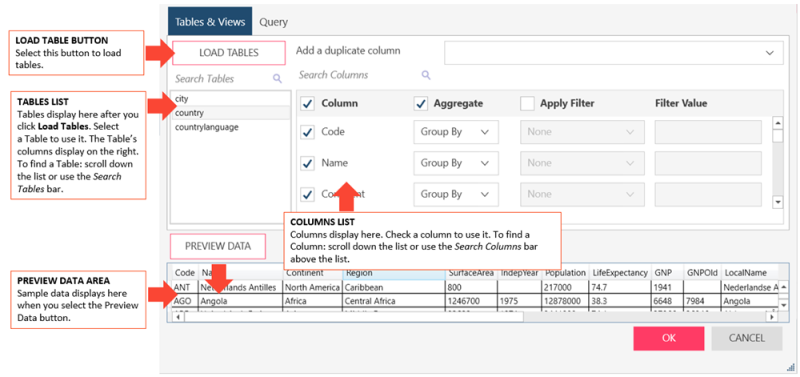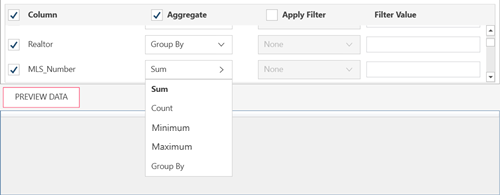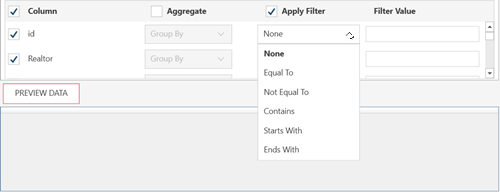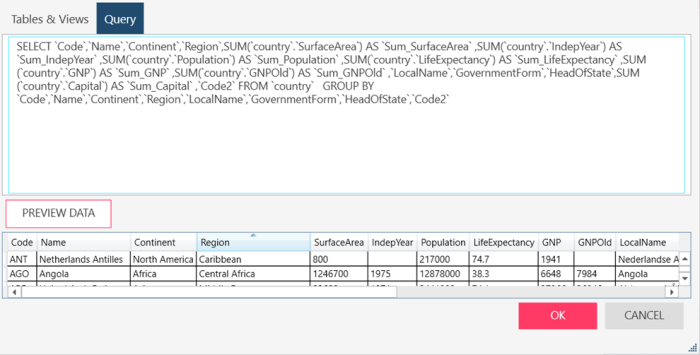Connector Dialog for Oracle
Enter values into the dialog box to connect and fetch data from your Oracle data source.
Options
|
Field |
Description |
|
Connection Type |
Select to connect via standard connection or by using TNSNames. |
|
Host Name |
The name of the machine or domain containing the data source. This host must be accessible from the box where Monarch Data Prep Studio is installed. |
|
Port |
Port Number required to access the data source. A list of default connector ports is available here. |
|
SID/ServiceName |
Select SID or Servicename from the drop-down. Oracle SID is the unique name that uniquely identifies your instance/database. Service Name is the TNS alias that you give when you remotely connect to your database and this Service name is recorded in Tnsnames.ora file on your clients and it can be the same as SID and you can also give it any other name you want. |
|
User ID |
A valid User ID required to log-on to the data source. |
|
Password |
A valid Password required to log-on to the data source. This password must match the User ID above. |
|
Connection Settings |
Click the arrow to hide or display the following connection settings:
When the specified edition is not a valid edition, the driver generates a warning indicating that it was unable to set the current edition to the specified edition. |
|
Edition Name |
Name of the edition you are connecting to. |
|
Tables and Views Section |
Allows you to load, and then select, the tables from your database by manually selecting from a list. To load tables and views via search and select:
The columns of the table are displayed in the Columns List (beside the Tables List). Note: If you wish to add a duplicate column, select this column from the Add a duplicate column drop-down list provided.
To select a column: Check the boxes beside the columns you want to use. If you want to use all columns check the Column box on the header.
To aggregate columns:
If the data returned are to be aggregated, check the Aggregate box on the header, then select the aggregation method you want to use for each column. The following aggregation methods are possible for each data type:
To filter columns:
If the data returned are to be filtered, check the Apply Filter on the header. Then, for each column, select a filter method from the filter drop down and then enter the filter value in the Filter Value box. Note that some data sources require case-sensitive filter values. Refer to this list to check which data sources have case-sensitive filters. To load tables and views using an SQL Query, select the Query tab |
|
Query |
Allows you to load, and then select, the tables from your database by entering a SQL Statement. If you already selected Tables and Views, this box is updated to show the corresponding SELECT * FROM TABLE query.
If you want to define the query, enter the SELECT and/or EXEC statements to execute. Notes:
In cases you need to use a series of SQL statements with or without comments, we recommend you use stored procedures to contain these statements. The stored procedure can then be executed from the form.
|
|
Preview Data |
Click to fetch data using the credentials and criteria you have specified. This allows you to confirm your connection, ensure you have connected to the correct table, check your query, and verify the information that will be loaded. Notes:
|







